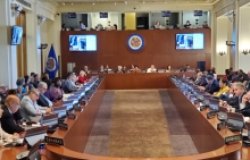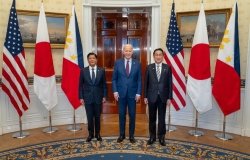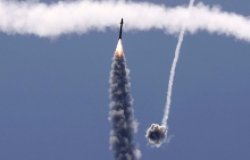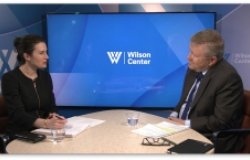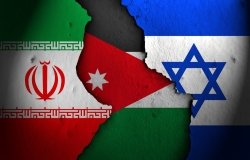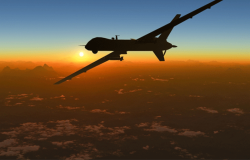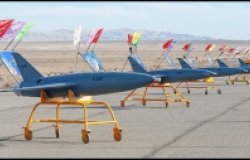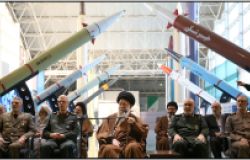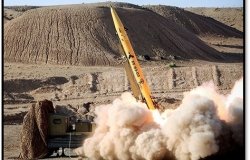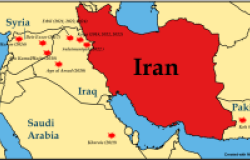Have the Iran Nuclear Talks Reached an Impasse?
"For Iran’s leaders, the technical details are the issue. They appear to be preparing the Iranian people for the possibility that no agreement will be reached and, if so, that failure will be blamed on the intransigence of America and its negotiating partners, rather than any shortcoming on Iran’s part," write Haleh Esfandiari and Robert Litwak.
The nuclear negotiations between Iran and the group of six world powers bear out Einstein’s observation that politics is more difficult than physics.
At this point in the diplomatic process, the talks focus on technical details of a prospective agreement. But the politics of nuclear diplomacy loom large.
To the "P5+1"–the five permanent members of the U.N. Security Council, plus Germany–the offer they have made is fair, even generous. The Iranians, however, insist that the terms are insufficient. The impasse points to a larger question: whether Iran’s supreme leader will accept this or any nuclear agreement.
For the U.S., a nuclear accord must incorporate concrete, verifiable measures to block what Secretary of State John Kerry refers to as Iran’s "four pathways" to a nuclear weapon.
Media reports of the details suggest that the P5+1 negotiating position would allow Iran to retain a significant nuclear infrastructure–its ostensible goal–but would cut off these four pathways to a bomb.
From the U.S. perspective, Tehran is pressing for terms that would allow it to retain an oversize nuclear program and other conditions relating to the length of the agreement and the verification regime that, the U.S. believes, would leave the four pathways potentially open.
So what are these pathways?
The first two relate to Iran’s uranium enrichment sites at Natanz and Fordow. Both had been covert facilities until their existence was made known through U.S. and allied intelligence. Because the United States long ago backed off its demand of "zero enrichment," the negotiations are focused on the number and sophistication of the centrifuges at those sites, with the West pushing for terms that would mean it would take at least one year should Iran seek to "break out" a weapon. Critics in Israel, and from some in Congress, say that such a deal would allow Iran to retain a limited enrichment program giving it a "hedge" option for a weapon.
The third pathway relates to Iran’s heavy-water reactor at Arak, which could allow an alternative route to a bomb employing plutonium. The interim agreement between Iran and the P5+1 has frozen activity at Arak, and Western negotiators have proposed that the facility be repurposed into a proliferation-resistant light-water reactor.
The fourth pathway to a bomb is the "sneak-out" option, in which Iran would develop a covert facility. To preclude this, the P5+1 have insisted on a rigorous inspection regime and have argued that Iran’s record of violating International Atomic Energy Agency terms strips Tehran of the benefit of the doubt.
In return for implementing meaningful steps to block these pathways to a bomb, the P5+1 is offering sanctions relief phased to Iranian performance and a modest number of centrifuges. Implicit in the deal is Iran’s integration into the world.
A March 24 deadline has been set for a framework agreement on broad principles, with an agreement on the technical details expected by the end of June. Both sides seem to feel that the March deadline constitutes the make-or-break point.
President Barack Obama said on Monday that he sees no reason to extend the negotiations past the March deadline if no framework agreement is reached. Secretary Kerry has echoed him, and Iranian Foreign Minister Mohammad Javad Zarif has said he sees no benefit in a further extension if the agreement deadlines are not met. Iran’s supreme leader, Ayatollah Ali Khamenei, has gone even further in insisting that the framework agreement and the agreement on technical details have to be worked out at once.
President Obama also said Monday that the technical issues have been fully discussed and that it is time for Iran to make a “political” decision, implicitly suggesting that whatever offer has been made is the final one.
But for Iran’s leaders, the technical details are the issue. They appear to be preparing the Iranian people for the possibility that no agreement will be reached and, if so, that failure will be blamed on the intransigence of America and its negotiating partners, rather than any shortcoming on Iran’s part.
Mr. Khamenei said Sunday that no deal is better than a bad deal, and Mr. Zarif remarked that the negotiations’ failure would not mean "the end of the world." Iranian President Hasan Rouhani argued Tuesday that Iran had already taken "all the necessary steps."
All this suggests the two sides are at an impasse. In the runup to March 24, we will probably witness one last major effort to bridge the differences. Until then, both sides will urge patience, knowing that at the end of the day failure will have repercussions that neither side would welcome.
The opinions expressed here are solely those of the authors.
This article was originally published in The Wall Street Journal's Washington Wire.
About the Authors

Middle East Program
The Wilson Center’s Middle East Program serves as a crucial resource for the policymaking community and beyond, providing analyses and research that helps inform US foreign policymaking, stimulates public debate, and expands knowledge about issues in the wider Middle East and North Africa (MENA) region. Read more


